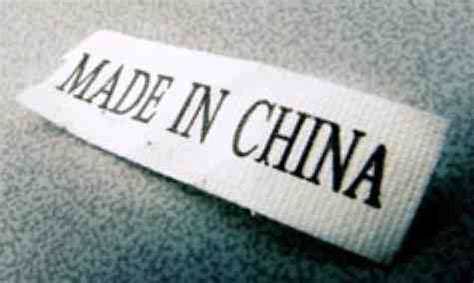“Made In China” Pt 5: The 12th 5 Year Plan
May 3, 2019

In the last blog installment we published of this series, Made In China Quality and Perception: Improving Standards and Improving Quality – Part 4, discussed the recovery China made after dealing with major quality scandals and recalls between 2007 and 2008. This week, we continue the series and will examine the new 5 Year Plan put in place to focus on the value and quality of Chinese goods.
New 5 Year Plan Brings New Focus on Value and Quality
Whatever the root cause of the problem, whether or not it was cultural or related to an antiquated regulatory system, after 2007-08, it appeared as if some serious structural changes began to take root. In part, this may have resulted from Chinese firms’ increasing willingness to acquiesce to the requirements of foreign regulators as they sought to penetrate those markets further. Furthermore, the major scandals in those years, mentioned in Part 3, likely made foreign importers more aware of the risks of buying from China, as well as Chinese manufacturers more aware of what would be expected of them if they were to further seek to dominate in a global marketplace.
However, potentially more influential, and certainly more observable, was the central government’s increased willingness to put a focus on both the quality of products coming from China as well as the sophistication of those products and the processes used for the industries involved.
The 12th 5-year plan, released in March 2011 for the period of 2012 to 2017, formally solidified this commitment as Beijing announced several major initiatives that would be aimed at increasing China’s global standing in both quality and technology. As anyone familiar with China’s recent history is likely aware, when the government declares something as a priority, a tremendous amount of energy and resources are being devoted to meet these ends. Thus, these bold proclamations from Beijing marked an important step towards what would end up being a fundamental structural shift of long-term manufacturing and exporting for the country.
Some of the major, relevant initiatives included:
- Investment in Strategic Emerging Industries (SEI):
This initiative anticipated moving China away from being the default source for cheaply made, low-value added goods and diverted resources to high-value added products instead. The goal was to remain the “World’s Factory” by investing heavily into industries that they predicted would be the backbone of global manufacturing in the future, reflecting an assumed shift towards a newly emerging manufacturing environment. These industries included biotechnology, new energy, high-end equipment manufacturing, energy conservation and environmental protection, clean-energy vehicles, new materials and next generation IT. The government was reportedly prepared to spend RMB 4 trillion on these industries within this 5-year period, with a targeted increase in SEI contribution to GDP from 5% to 8% by 2015 and to 15% by 2020.
- Pharmaceutical Sector
The goal here was consolidation and commercialization of the pharmaceutical sector throughout the 5-year period. The government aimed to consolidate the 13,000 small distribution enterprises and establish large national establishments with the hope of eliminating high markups on drugs as well as fake or substandard product quality.
III. Administration
The government planned to strengthen fiscal and financial policies that supported the high-tech industry, including updating the management of research funding and venture capital investment systems.
- Commercialization
The key goal for China here was to improve channels that facilitated research undertaken at universities and research institutions to reach the marketplace as efficiently as possible.
- Foreign Aid
The 12th Five Year Plan planned to encourage Chinese regulators to welcome advice and training from experienced foreign companies and governmental entities, as an opportunity to help guide the implementation of the new technologies. This allowed for an increased rate of growth as companies were able to build off the advances and regulatory structures built up and tested over a much longerperiod of time abroad.
As the 12th5 Year Plan came to a close, results showed that during this period, the oil and gas exploration and development targets of China were satisfactorily completed, but some deficiencies still existed. This paved the way for the development of the 13th5-year plan.
The 13th Five Year Plan lays out the strategy and pathway for China’s development for 2016-2020. It includes specific environmental and efficiency targets. It prioritizes economic development to achieve a GDP growth rate of 6.5-7% per annum, and the goal of becoming a “moderately prosperous society” by 2020. This goal is driven by five crucial values: innovation, coordination, green, openness, and shared development. The 13th Five Year Plan also sets objectives for carbon emissions and energy and water consumption, as well as goals for improving efficiency of industries, eliminating outdated or overcapacity production facilities, increasing energy production from renewables, and developing green infrastructure. These green initiatives followed the objectives of the 11th Five Year Plan, which executed the concept of energy intensity targets in a number of pilot projects, and the 12th Five Year Plan, which broadened the nature of economic growth towards social inclusiveness and sustainability, according to this article from The London School of Economics and Political Science.
Next week, we will discuss Research and Development, and how investments in R&D have affected the innovation, and furthermore the quality perception, of Chinese goods.
Written by Buck Perley
Research by Bonnie Roche
All posts in this series:
- “Made In China” – Quality and Perception: Intro
- “Made in China” – Quality and Perception: Background of Chinese Production and Exports
- Made in China Quality & Perception: The Source of Negative Perception – Part 3
- Made In China Quality and Perception: Improving Standards and Improving Quality – Part 4
- Made In China Quality and Perception: The 12th 5 Year Plan – Part 5

3 Comments